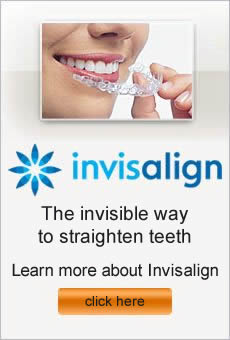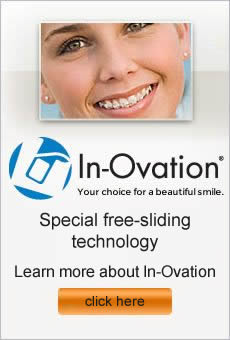Whether your child needs an evaluation for potential treatment or you have decided to consider adult orthodontics to straighten your teeth, finding the right orthodontist will help ensure a good experience. Ask friends, coworkers, and your general dentist for names to begin the process. When you start looking for potential candidates, you may want to consider the following points as you make your decision.
• Convenience
As with many things, location matters. You may want to find an orthodontist close to your child’s school or near your office to minimize drive time and disruption to your daily routine.
• Availability
In this day and age, people have a myriad of commitments, so they need medical providers with flexible hours. Make sure the orthodontist you are considering has appointment times that work with your schedule.
• Experience
Find out how long the orthodontist has been in practice and what technologies the practice utilizes for treatment. For instance, make sure the orthodontist is up-to-date on the latest options for adult therapy.
• Recommendations
As you narrow down your choices, talk with people you know or ask for referrals from current patients so that you can gather specific feedback about the candidates you are considering.
• Personality
Before making your final selection, schedule consultation appointments with the top candidates. When you arrive, talk with the office team to get a feel for the practice environment. These meetings will also give you a chance to meet with each orthodontist one-on-one to determine who you would feel comfortable with as a provider.
Give us a call at our Sherman Oaks California orthodontic office – Dr. Fotovat – Burbank Orthodontist – WebBraces.com
Although it seems cute to see a little baby sweetly sucking on his thumb, that habit can actually cause long-term dental problems. In fact, about 80 percent of babies and young children suck their thumbs at some time. While this method of self-soothing seems appealing to tired parents, most orthodontists recommend that parents get their children to stop thumb sucking as soon as possible.
In general, thumb sucking doesn’t cause extensive issues while your child still has baby teeth. Once permanent teeth arrive, around age six, you run the risk of causing problems that will require orthodontic intervention. Children who suck their thumbs after this point run the risk of developing malocclusions, or alignment problems, as well as speech problems or damage to the roof of the mouth. Another element that contributes to the problems created by thumb sucking is intensity. When children forcibly suck their thumbs from an early age, this action could affect the shape of their mouths and the position of teeth, even the baby teeth.
If you have a thumb sucker, try these tips to help break your child of this habit. Keep in mind that a child needs some motivation to quit.
- Help your child see that he or she is growing up and know longer needs things like bottles, high chairs, etc. Explain that thumb sucking is the same thing.
- If you notice thumb sucking, try to distract your child by reading a book or offering a stuffed animal.
- Praise your child for making progress, even if it is baby steps.
- Use peer pressure to your advantage. Encourage your child to spend time with friends who don’t suck their thumbs.
- Have your dentist and doctor back you up. Children often respond better to authority figures.
- Talk to your dentist or orthodontist about specially designed devices that can help curtail thumb sucking.
If you have questions about thumb sucking, don’t hesitate to contact our office.
Dr. Fotovat – Burbank Orthodontist – WebBraces.com
Braces are extremely sturdy and durable, but they are still capable of being popped off, dislodged or damaged if the patient eats the wrong thing. As a rule of thumb, avoid any food that is overly chewy, sticky or hard. Here is a list of foods that aren’t recommended while wearing braces:
- nuts
- popcorn
- tortilla chips
- sticky or hard candy, especially taffy and caramel or anything “gummy”
- ice
- chewing gum
- beef jerky
- hard cookies, crackers or wafers
- corn on the cob
Some foods are okay to eat, but will need to be eaten carefully. Biting into foods with your front teeth can seriously damage your brackets, and biting into something and then making a “tearing” motion can also damage your braces. The following foods should be consumed carefully when wearing braces:
- thick bread, such as French or Italian bread
- bagels or hard rolls
- raw vegetables like celery or carrots
- raw fruits like apples, pears or plums
- meat such as steak or pork loin
- ribs
- pizza crust
- pickles
Some foods are approved completely for consumption, such as:
- bananas
- yogurt
- hull-less popcorn
- cheese
- grapes
- melons
- mashed potatoes
- pasta
- peanut butter and jelly
In addition to being aware of the foods you’re eating, be aware of your personal habits. Do you bite your nails? With braces, you will want to stop. Chewing pens and pencils is also a habit you’ll have to break, or you’ll risk damage to your braces.
Speak to Burbank CA orthodontist Dr. Fotovat if you have any questions about what foods or activities you should eschew while wearing braces. In no time at all, you’ll be enjoying life after braces, eating what you like with your straight, aligned teeth. Until then, treat your braces with care!
If you or your child have been referred by your dentist to an orthodontist for treatment to straighten teeth, there are some questions you will want to ask to ensure a successful experience. Orthodontic treatment is an extensive process, so arming yourself with knowledge will help guarantee optimal results. When consulting with an orthodontist, consider asking the following:
- What type of braces do you recommend? Would Invisalign, lingual, or Speed braces be an option?
- Will braces be necessary for the top teeth, bottom teeth, or both?
- Will rubber bands be necessary to correct the bite?
- Will headgear or other appliances be necessary? If so, for how long and when will the appliance need to be worn?
- Will any teeth need extraction?
- Will orthodontic treatment alter the facial appearance?
- What is the schedule for orthodontic checkups and adjustments over the course of treatment?
- What happens if a wire or bracket breaks or is poking into the cheek or gums? Will this require a visit to the orthodontic office?
- Do braces hurt? If so, for how long and how should the discomfort be controlled?
- Is it possible to play contact sports when wearing braces?
- What kind of oral home care will be necessary with braces? Do braces require special brushes, toothpaste, or floss to maintain?
- How long will orthodontic treatment take from start to finish?
- Will a retainer be necessary after treatment is finished? If so, what kind of retainer will you provide and when will it be worn?
Today’s orthodontics offers many options for straightening teeth and correcting jaw problems. It is vitally important that you are comfortable with the process before beginning treatment. In cooperation with a qualified orthodontist, your treatment will result in a lifetime of straighter, healthier smiles. Schedule your consultation with Sherman Oaks orthodontist, Dr. Fotovat.
Studies have shown that today’s teens are under more pressure than ever, from society, from their peers and from themselves. Some of the most awkward times in a person’s life can be during puberty, between the ages of 11 and 14. It’s during this time that so many teens are getting braces.
Most orthodontists wait to begin orthodontia until a patient’s adult teeth have fully descended. This corresponds with puberty in most young people. When braces are applied at this stage, the bones of the mouth are still forming and tooth alignment issues can be corrected far more quickly than they can be corrected in adults. Unfortunately, adding the aesthetic burden of metal braces can lead many teens to feel unhappy and dissatisfied regarding their appearance.
Invisalign aligners directly address these aesthetic issues by providing teeth straightening via a series of clear plastic trays, or aligners. These aligners stay in place most of the day and straighten a teen’s teeth in stages. When one tray’s work is done, another tray takes its place.
If a teen’s adult teeth have not fully erupted, Invisalign aligners can have eruption tabs to accommodate incoming teeth. With such design features as power ridges, Invisalign can provide the high level of force needed to move even the largest tooth and its roots.
Aligners allow your teen to remove the trays while eating and brushing, keeping his or her mouth healthier. Trays must be worn as recommended, however, in order to achieve best results. Invisalign should be in the mouth a minimum of twenty-two hours a day, so your teen must be responsible and dedicated.
Ask Sherman Oaks Invisalign orthodontist Dr. Fotovat if your teen is a candidate for Invisalign. Your teen may be able to have straighter teeth without the embarrassment of being a “brace face.”
Let’s face it. When you talk about straightening teeth, images of middle school kids with mouths full of metal and colored bands come into your mind. As an adult, those images might give you nightmares if you imagine it for yourself. But what if you have crooked teeth or problematic bite issues? What are your teeth-straightening choices that won’t embarrass you? Invisalign is the answer and is often the right choice for adults seeking to straighten their teeth.
Invisalign is a system by which a series of clear plastic trays, or aligners, are worn for a minimum of 22 hours each day, gradually straightening your teeth without metal brackets or wires. As each tray completes its alignment, another tray is applied to continue your smile transformation.
The clear plastic aligners allow for discrete use for adults, especially in professional or interpersonal situations. It enables the wearer to function professionally without losing any kind of credibility because of negative perceptions of metal braces. You’ll eat with confidence on dates or at business dinners because the aligners are removed for eating meals. After rinsing your mouth with water, simply pop the aligner back in and allow your smile to straighten.
You’ll also take out the aligners each time you brush your teeth. This enables you to thoroughly clean your mouth and teeth and makes flossing a snap. Flossing with traditional braces takes a long time and can be difficult, even for adults. Choosing Invisalign as an adult allows you to have a healthier mouth and therefore fresher breath.
These and other benefits are possible with Invisalign. Visit Sherman Oaks orthodontist Dr. Fotovat to begin learning about all the advantages that Invisalign can offer you as an adult looking to have straighter teeth.



